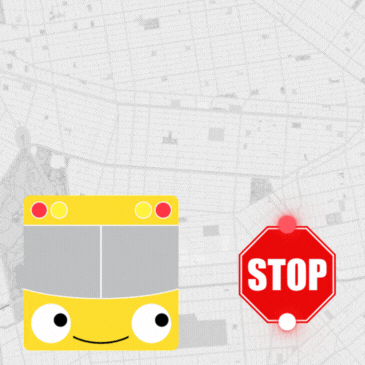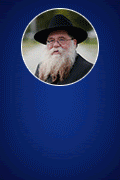In a volume published in 1930, Rabbi Hayim Elazar Shapiro of Munkacs (Minhas Eluzar, 1871-1937) commented that he had seen and heard it said in the name of greats that there was a practice to only hold the lulav during the Hallel service. Presumably the Munkatcher Rebbe meant that the three species that were bound together – lulav, hadasim and aravot – were held during the service and the etrog was not. The Minhas Eluzar decried this practice, calling it a “mistaken custom” and adding that it had no basis.
Why Don’t Lubavitchers Hold the Esrog During Hallel?
In a volume published in 1930, Rabbi Hayim Elazar Shapiro of Munkacs (Minhas Eluzar, 1871-1937) commented that he had seen and heard it said in the name of greats that there was a practice to only hold the lulav during the Hallel service. Presumably the Munkatcher Rebbe meant that the three species that were bound together – lulav, hadasim and aravot – were held during the service and the etrog was not. The Minhas Eluzar decried this practice, calling it a “mistaken custom” and adding that it had no basis.
The Munkatcher Rebbe went further, warning that such conduct would lead innocent bystanders to the erroneous conclusion that it was possible to discharge the obligation of taking the Four Species without the etrog – the most difficult to obtain and the most expensive of the Four Species.
Notwithstanding this clear critique, the Minhas Eluzar did not reveal the identity of who had adopted this flawed practice.
RABBI YOSEF Yitzhak Schneersohn of Lubavitch (Rayatz, 1880-1950) suffered from multiple sclerosis and in 1936 at the age of 56 he suffered a heart attack and stroke. His hands shook and he was physically weak. As a result, the Rayatz chose to avoid holding the etrog, lest he blemish it. During the Hallel prayer he would only hold the bundle of the lulav, hadasim and aravot. When it came time to shake the Species he would pick up the etrog. Each time after he held the Four Species together, the Rayatz would fastidiously check the etrog to ensure that it remained flawless.
Almost 40 years after the Rayatz died, in 1987, his son-in-law and successor – Rabbi Menachem Mendel Schneerson of Lubavitch (Ramash 1902-1994) – explained that the hassidim had seen the Rayatz’s conduct and chosen to copy their master. The occasion for the explanation was that Rebbe himself, who had copied the Rayatz’s custom over the years, unexpectedly acted differently in 1987: he held the etrog with the other Species for the entire Hallel service.
What happened in 1987? According to the Bible, every seven years a Hakhel ceremony was held in the Temple. On this occasion, all Jewish men, women and children assembled to hear the king read from the Torah. This gathering occurred during Succot in the year following a shmita (sabbatical) year (Deuteronomy 31:10-13). 1987 was a year following shmita.
On the fifth night of Succot 1987, the Rebbe explained that he had changed what had become his own custom in an attempt to personally experience the uniqueness of Hakhel – a time of ingathering of all Jews – and to inculcate his followers in this vein.
Rabbi Menachem Mendel died in 1994, about half a year before the next Hakhel, so we do not know whether this was a one-time event or something Ramash intended to do every seven years.
GOING BACK to the origins of the practice: it is difficult to say whether or not the Minhas Eluzar knew about the conduct of the Rayatz. The two hassidic masters had definitely met and they shared various opinions, including an outspoken aversion to all forms of Zionism. It is unclear, however, when the Rayatz began his practice and whether the Munkatcher Rebbe was aware of it.
Either way, the Munkatcher Rebbe’s warning of the folly of such a custom was only partially realized: never in Lubavitch circles was there a suggestion that one could fulfill the commandment of the Four Species without an etrog. Nevertheless, hassidic bystanders – including Rabbi Menachem Mendel – sought to mimic the conduct of their leader and they adopted the Rayatz’s custom. This practice became codified Lubavitch practice as recorded in the official Lubavitch anthology of customs.
To this day Lubavitch Hassidim do not hold the etrog while saying Hallel, picking it up briefly for the sections that the Four Species are to be waved in different directions and religiously examining the etrog before placing it down and continuing with the Hallel service.













Jim
I would love to see what people have to say about this. Today in Far Rockway someone asked me this same question and we spoke about this….I did not have an answer as to why we do it this way…..would love to hear what someone from our community has to say – regarding a source in halacha for doing it this way.
CR
As a partial analog to this discussion I have observed the practice in Ashkenaz shuls. When they bentch the minim they start with all of them together but with the Esrog oriented Pitom downwards. After the bracha they flip the Esrog Pitom-up and wave. Similarly, many people there will say Hallel with the Pitom downward again only to flip it upwards for the Na’anuim (Hodu, Anah, etc.). The practice of holding the minim in a “non yotze” fashion during hallel except for the Na’anuim is not a Lubavitch-only thing.
At any rate, the author does not make clear if the M”E is objecting to this practice outlined here or if there were places that only held the Lulav and nothing else. There were heterodox communities in Hungary at that time that may have done so (they were largely lost during The War). Perhaps he was objecting to them specifically.
thanx for the article
well written and informative.
pesachya
there are many many different minhogim about 4 minim, it is correct that the rebbe explained this as the reason for our minhag (i.e. that the frierdiker rebbe did it because of his health and chassidim copied him), however the rebbe also wrote in the reshimos what he heard from the frierdiker rebbe years earlier that the rebbe rashab already had this minhag (perhaps also due to same concern?! we don’t know).
lulov only
It appears that the Minchas Elazer is referring to the minhag of holding the lulav only during the ENTIRE hallel. Since we hold the esrog during the na’anuim no one would come to the erroneous conclusion that the esrog is not needed, which was the Minchas Elazer’s concern.
Be careful not to damage the esrog
Maybe the large-size esrogim that some people (Rebbeim) use are simply too heavy to carry throughout the entire Halel?
However, I always thought that the reason not to hold the esrog throughout the entire Halel was as a precaution not to accidentally damage it – as described about the Rayatz zt”l in the article…
chaim
what do our maspiyim and rabbonim say? some minhagim was only meant for a small time not horass larabim
moshe
In the sefer reshimos Harabash p.44-45 is written that so was the custom of the Rebbe Rashab the Rebbe Rayatz’s father.
Laaniyas Dayti
It is difficult to understand this concept of damaging the esrog during naanuim. For someone afflicted with a physical disorder that results in shaky hands, it is understandable that the less you hold it, the less movement there is. However for a healthy person, in replacing the esrog so many times (back and forth to its container) there is much more movement and opportunity to accidentally hit a different object (table, esrog container, someones waving hand, etc). Can someone please explain this to us.
Another matter escapes my understanding: When the Rebbe talked about his change in the year of Hakhel, he said that he was reverting to the written halacha, and “doing his own thing” in that year. Other years he reverted to the minhag of his Rebbe – the Rayatz. So chassidim of the Rebbe should be doing as the Rebbe considered “his own thing” rather than following the Rayatz who was never their Rebbe (excepting that the neshama is the same.) Ny elanations out there?
Interesting: Rabbi Yolless (of Philly) once asked the Rebbe why he davens at 10.00 in the morning and not the Kabbala oriented zman of 9.00. The Rebbe answered “that is what my father in law did, and I have never questioned it.” Could it be that the Rayatz davened later because of his physical condition?
To #9
Reading your comment it is obvious that somehow there is a misunderstanding of the point. Your question #1 seems to be based upon the understanding that we do not hold the Esrog because it might get damaged, hence your question that for able healthy people there is more opportunity to damage it in the way that we do it, Now, the reason why the Rebbe followed that Minhag is because that was the way his Rebbe was doing it and therefore this is his HIDDUR, regardless of why and for whatever personal reasons the Frierdiger Rebbe might have done it. Now note that in the printed Sicha you do not find the Rebbe has ever said the words that you are supposedly quoting, that he has reverted to “doing his own thing” etc. Knowing what the Rebbe has said so many times, the Rebbe would not say this words, because “his own thing” is following -for the reason of hiskashrus- the way his Rebbe (who like all other Rebbeim is also one of our Rebbeim) did it. -The Rebbe quotes as his source the Gemoro that Reb Acha bar Yaakov was mehader to look for a Hadas that other Amoroyim considered NOT KOSHER and ALL his Rebbe, Rav Kahane, said was that this hedas was ALSO kosher While holding that the other ones are certainly kosher, and yet because it came out of his Rebbe’s mouth, he was MEHADER to look for that particular one, knowing that in so many others opinion, it was NOT KOSHER- and the Rebbe went on to stress how difficult and against his habit and nature it is to make a change, and particularly in a matter that might Chas Vesholom touch upon Hiskashrus… And here is also the answer on why we do it. We do it because OUR REBBE did it.
Note: This matters are much to sacred and spiritually sensitive to be debated on this type of media, but I felt compelled because of the previous comments, to give at least, this pointers..and clearly there is SO MUCH more. “Veidoch zil gmoyr” as Hilel pointed out to the person that wanted KOL BHATORO AL REGEL ACHAS“ and after he gave him the famous one-liner ”Ma D’aloch Sonu Lechavroch lo saavid” What you don’t want done to you do not do to your friend, he continued to direct him, saying that this is only a pointer and the rest GO AHEAD AND LEARN
moshe
With due respect to the writer of this article apparently he misqoutes the words of the Munkatcher, as follows:
If the the writer is refering to the sefer Nimukei Orach Chaim on Shulchan Aruch simen 652 then the whole article is out of hand! there he clearly deals with holding the Lulav during “Davening” as stated in the Gemara, and has nothing to do do with “Hallel”, as wrongly quoted by the writer from the Munkatcher from the greats! It remains that During Hallel all Lubavitchers raise the Esrog to the Lulav only by the Naanuim as was the known practice in public of The Rebbe Rashab the Rebbe Rayatz and the Rebbe ZY“A.
BTW Reb Mosheh Feinstein ZT”L in Igros Moshe Orach Chaim vol 4. simen 94 also explains the Gemara dealt with by the Munkatcher to mean all the arba minim including the esrog.
moshe
The above Igros Moshe is vol.4 simen 99.
moshe
In the above article it says quoting the munkatcher from the greats that only the lulav was held “during the hallel service”. in the original article on the jerusalem post site it says “during the service”. Hallel is the key word here and is not discussed at all by the Munkatcher and therefore caused the writer of the article in the jerusalem post to mix up the issues.
Its a major blunder on the part of the writer.
It is imperative for the reader to see the sefer nimukei orach chaim simen 652 to see how the issues were mixed up!
Arava
I believe that these are the type of articles that CHI was made for, and I’m glad that some interest was generated by the readers. Yashr Koach and Gut Yom Tov!
Chosid
Guys instead of looking at minhagim as an ancient custom which is out dated and had reasons that are not applicable today (health) and instead of making as if all minhagim are merely about “copycating” our leaders why don’t we make it clear that minhag yisroel torah, and that if it’s recorded in the rebbe’s Sefer HaMinhagim then it’s certainly something the rebbeiim want us to do. This is not the only custom the rebbe took from the freierdiker rebbe. Ther are many more – some based on kabbalah, some taken from other tzadikim, some for “health reasons,” – yet all this is not relevent. whats important is that the rebbe saw it important to adapt a particular custum and wanted his chassidim to follow it.
Furthermore, the rebbe tought in a sicha that even a “mistake” of a rebbe has a very real source from kabbala: there is a sicha about how the freierdiker rebbe exchanged sefiros during one night of sefiras haomer (chased shebinetzach? was “accidently” changed to netzach shebichesed) from which an entire sicha was deditated.
So we must remember that a Minhag Yisroel should not be dismissed as merely for “health reasons” of a particular rabbi.
Laaniyas Dayti
To #10
Hearing from the Rebbe is a different experience to reading the redacted sicha.
Obviously the Rebbe didn’t say “doing his own thing” – and that is why it was in quotation marks (to indicate it was a borrowed term from current language).
The Rebbe DID say he was being Poretz Geder for Hakhel and doing it this way. Which to any thinking person would mean he has a suppressed expression (suppressed by hiskashrus) that he is now revealing or expressing.
May I respectfully suggest that you get out of the box and think rather than parrot. It would also be of value if you asked those who were around in the earlier years, as to the snippets “the Architect” slipped into the sichos and particularly the ha’arois on them. Some were flatly rejected, other passed. Just as keli mamshich or and the or is lefi hakeli, so in cases the source was drawn in the direction of the keli – hence the title “the Architect”. In 1966 he became the mashpiya in 770 (before he was in yeshivah ketana or mesivtaz) and expressly said he was going to change 770. He did.